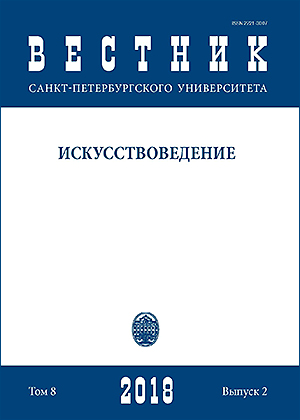Some thoughts on the conventional alteration of rhythm
DOI:
https://doi.org/10.21638/11701/spbu15.2018.203Abstract
The article is dedicated to the problem of terminology concerning the main forms of the conventional rhythmic alteration in Baroque and partly Post-Baroque music. Beginning with the study by Arnold Dolmetsch who, in 1915 introduced into scholarly usage the lexeme conventional alteration of rhythm, many authorities have directed their scientific research toward the problem of the specific conventions which existed in rhythmic notation. As a result numerous related musical terms entered the thesaurus of contemporary research: ‘conventional alteration of rhythm’, ‘rhythmic alteration’, ‘notes inégales’, ‘inequality’, ‘overdotting’, ‘unequal’, and the like, which have become abundantly used. However, strict definitions and hierarchies among these terms are lacking in scholarly knowledge. Moreover, until the present day, one may uncover diametrically opposed and controversial interpretations of the basic concepts in the sphere of rhythmic alteration in thematically oriented music publications, reference and encyclopedic literature. The principal disagreements have arisen in connection with the French artistic technique of the notes inégales when a number of authors spread it far beyond the performance practice of French Baroque and Post-Baroque music contrary to, and without justification in, the opinions of early French musicians. This lead to great confusion in early music performance for those musicians who put much effort into their search for historically informed interpretation. The article attempts to reveal the most problematic aspects of modern ideas about the practice of rhythmic alteration in Western European music of the 17th and 18th centuries, and to point to the most characteristic and typological errors in the interpretation of historical sources by contemporary researchers.
Keywords:
сonventional alteration of rhythm, rhythmic alteration, notes inégales, inequality, overdotting, marqué, coulés, dont les points
Downloads
References
Downloads
Published
How to Cite
Issue
Section
License
Articles of "Vestnik of Saint Petersburg University. Arts" are open access distributed under the terms of the License Agreement with Saint Petersburg State University, which permits to the authors unrestricted distribution and self-archiving free of charge.






